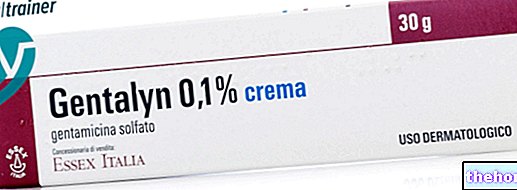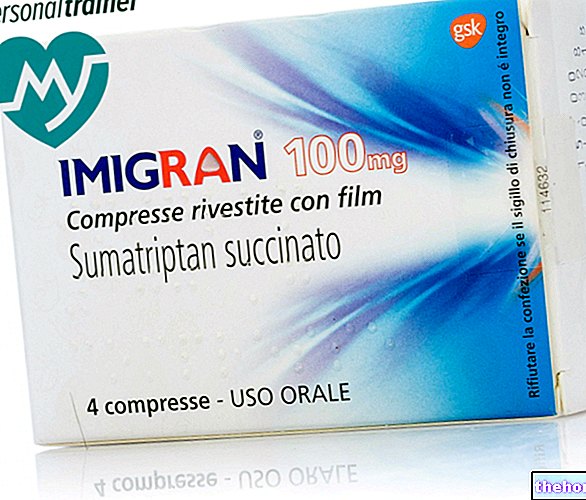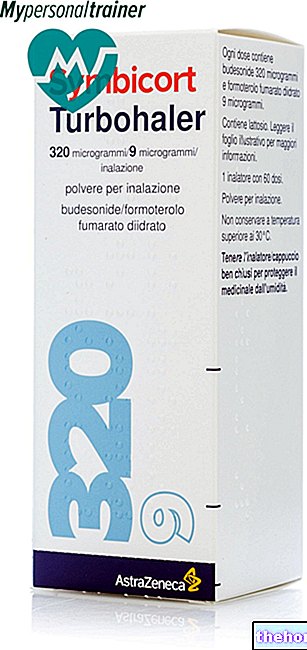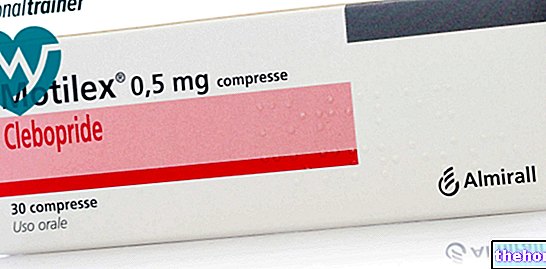Active ingredients: Felodipine
Felodipine Sandoz 5 mg prolonged-release tablets
Felodipine Sandoz 10 mg prolonged-release tablets
Why is Felodipine used - Generic drug? What is it for?
Felodipine Sandoz contains the active substance felodipine which belongs to a group of medicines called calcium channel blockers. This medicine lowers blood pressure by dilating small blood vessels. It does not adversely affect the function of the heart.
Felodipine Sandoz is used to treat high blood pressure (hypertension) and pain in the heart and chest, for example due to physical activity or stress (angina pectoris).
Contraindications When Felodipine should not be used - Generic drug
Do not take Felodipine Sandoz
- if you are allergic to felodipine or any of the other ingredients of this medicine.
- if you have an acute myocardial infarction (heart attack).
- if you have recently onset chest pain or angina pectoris that has lasted more than 15 minutes or more or is more severe than usual.
- if you suffer from decompensated heart failure.
- if you suffer from a disorder affecting a heart valve or heart muscle, until you have consulted your doctor.
- if you are pregnant. You must inform your doctor as soon as possible if you become pregnant while taking this medicine.
Precautions for use What you need to know before taking Felodipine - Generic drug
Felodipine Sandoz, like other medicines used to lower blood pressure, can in rare cases cause a considerable drop in blood pressure which, in some patients, can lead to insufficient blood supply to the heart. Symptoms of excessively low blood pressure and insufficient blood supply to the heart often include dizziness and chest pain. If you experience these symptoms, go to the emergency room immediately.
Talk to your doctor before taking Felodipine Sandoz, especially if you have liver problems.
Taking Felodipine Sandoz can cause swelling of the gums. Careful oral hygiene helps to prevent the gums from swelling (see section 4).
Children
The use of Felodipine Sandoz is not recommended in children.
Interactions Which drugs or foods can modify the effect of Felodipine - Generic drug
Tell your doctor or pharmacist if you are taking, have recently taken or might take any other medicines.
Some medicines / herbal products may affect your treatment with Felodipine Sandoz, for example:
- cimetidine (medicine to treat "stomach ulcer)
- erythromycin (medicine to treat infections)
- itraconazole (medicine to treat fungal infections)
- Ketoconazole (medicine to treat fungal infections)
- protease inhibitor medicines to treat HIV (such as ritonavir)
- medicines to treat HIV infections (such as efavirenz, nevirapine)
- phenytoin (medicine to treat epilepsy)
- carbamazepine (medicine to treat epilepsy)
- rifampicin (medicine to treat infections)
- barbiturates (medicines to treat anxiety, insomnia and epilepsy)
- tacrolimus (medicine used in organ transplants) Medicines containing St John's wort (Hypericum perforatum) (herbal product used to treat depression) may reduce the effectiveness of Felodipine Sandoz and should therefore be avoided.
Felodipine Sandoz with food and drink
Do not drink grapefruit juice if you are taking Felodipine Sandoz, as this may increase the effect of Felodipine Sandoz and the risk of side effects.
Warnings It is important to know that:
Pregnancy and breastfeeding
Pregnancy
Do not take Felodipine Sandoz if you are pregnant.
Feeding time
Tell your doctor if you are breastfeeding or about to start breastfeeding. Felodipine Sandoz is not recommended for mothers who are breastfeeding and your doctor may choose another treatment if you wish to breastfeed.
Driving and using machines
Felodipine Sandoz may mildly or moderately affect the ability to drive and use machines. In the event of headache, nausea, dizziness or fatigue, the ability to react may be impaired. Caution is recommended especially at the start of treatment.
Felodipine Sandoz contains lactose
If you have been told by your doctor that you have "intolerance to some sugars, contact your doctor before taking this medicinal product.
Dose, Method and Time of Administration How to use Felodipine - Generic drug: Posology
Always take this medicine exactly as your doctor has told you. If in doubt, consult your doctor or pharmacist.
Felodipine Sandoz prolonged-release tablets should be taken in the morning and swallowed whole with water. The tablets must not be divided, crushed or chewed. This medicine can be taken on an empty stomach or after a light meal that is low in fat or carbohydrates.
Hypertension
Treatment can start with a dose of 5 mg once a day. If necessary, your doctor may increase the dose or add another medicine to lower your blood pressure. The usual dose planned for the long-term treatment of this disease is 5-10 mg once a day. In elderly patients, a starting dose of 2.5 mg per day may be considered.
For a dose of 2.5 mg an appropriate strength medicine should be used.
Stable angina pectoris
Treatment should be started with a dose of 5 mg once a day and, if necessary, your doctor may increase the dose to 10 mg once a day.
If you have liver problems
The level of felodipine in the blood may be higher. Your doctor can reduce the dose.
Senior citizens
Your doctor will start treatment with the lowest available dose.
If you forget to take Felodipine Sandoz
If you forget to take a tablet, skip that dose completely.
Take your next dose at the usual time. Do not take a double dose to make up for a forgotten dose.
If you stop taking Felodipine Sandoz
If you stop taking this medicine, the disease may come back. Consult your doctor and ask for advice before stopping treatment with Felodipine Sandoz. Your doctor will tell you how long to take this medicine for.
If you have any further questions on the use of this medicine, ask your doctor or pharmacist.
Overdose What to do if you have taken an overdose of Felodipine - Generic Medication
If you take more doses of Felodipine Sandoz than recommended, you may have very low blood pressure and sometimes palpitations, a high or in rare cases low heart rate. Therefore, it is very important to take the number of doses prescribed by the doctor. If you experience symptoms such as feeling faint, lightheaded or dizzy, contact your doctor immediately.
Side Effects What are the side effects of Felodipine - Generic drug
Like all medicines, this medicine can cause side effects, although not everybody gets them.
If any of the following symptoms occur, stop taking Felodipine Sandoz and tell your doctor immediately:
- Hypersensitivity and allergic reactions: The signs may include the formation of skin wheals (lumps) or swelling of the face, lips, mouth, tongue or throat.
The following side effects have been identified. In most cases, these reactions appear at the start of treatment or following a dose increase. If such reactions occur, they are usually transient and decrease in intensity over time. persistence of any of the following symptoms, tell your doctor.
Mild swelling of the gums has been reported in patients with "inflammation of the mouth (gingivitis / periodontitis)." Careful oral hygiene can help avoid or solve this problem.
Very common: may affect more than 1 in 10 people
- Edema in the ankles
Common: may affect up to 1 in 10 people
- Headache
- Flushes
Uncommon: may affect up to 1 in 100 people
- Heart rate abnormally elevated
- Palpitations
- Too low blood pressure (hypotension)
- Nausea
- Pain in the abdomen
- Burning / tingling / numbness
- Skin rash or itching
- Fatigue
- Dizziness
Rare: may affect up to 1 in 1000 people
- Fainting
- He retched
- Itchy rash
- Pain in the joints
- Pain in the muscles
- Impotence / sexual disorders
Very rare, may affect up to 1 in 10,000 people.
- Gingivitis (swollen gums)
- Increase in liver enzymes
- Reactions on the skin due to increased sensitivity to sunlight
- Inflammation of small blood vessels in the skin
- Frequent need to urinate
- Hypersensitivity reactions such as fever or swelling of the lips and tongue
Other side effects may occur. If you experience any uncomfortable or uncomfortable reactions while taking Felodipine Sandoz, consult your doctor immediately.
Reporting of side effects
If you get any side effects, talk to your doctor or pharmacist. This includes any possible side effects not listed in this leaflet. You can also report side effects directly via the national reporting system at www.agenziafarmaco.it/it/responsabili. By reporting side effects you can help provide more information on the safety of this medicine.
Expiry and Retention
Keep this medicine out of the sight and reach of children.
Do not use this medicine after the expiry date (EXP), which is stated on the package. The expiry date refers to the last day of that month.
Do not throw any medicines via wastewater or household waste. Ask your pharmacist how to throw away medicines you no longer use. This will help protect the environment.
Other information
What Felodipine Sandoz contains
- The active ingredient is felodipine. Each tablet contains 5 mg or 10 mg of felodipine.
- The other ingredients are: microcrystalline cellulose, lactose monohydrate, sodium lauryl sulfate, hypromellose, magnesium stearate, macrogol 4000, yellow iron oxide, red iron oxide and titanium dioxide.
What Felodipine Sandoz looks like and contents of the pack
Felodipine Sandoz 5 mg prolonged-release tablets
- Light red to red-gray, round, biconvex prolonged-release tablet engraved with F5 on one side.
Felodipine Sandoz 10 mg prolonged-release tablets
- Light red to red-gray, round, biconvex prolonged-release tablet, engraved with F10 on one side.
Available in the following packs:
Blisters and bottles of 7, 14, 20, 28, 30, 50, 50 x 1, 98, 100, 100 x 1 and 250 prolonged-release tablets.
Not all pack sizes may be marketed.
Source Package Leaflet: AIFA (Italian Medicines Agency). Content published in January 2016. The information present may not be up-to-date.
To have access to the most up-to-date version, it is advisable to access the AIFA (Italian Medicines Agency) website. Disclaimer and useful information.
01.0 NAME OF THE MEDICINAL PRODUCT
FELODIPINA SANDOZ - PROLONGED RELEASE TABLETS
02.0 QUALITATIVE AND QUANTITATIVE COMPOSITION
FELODIPINE Sandoz 5 mg prolonged-release tablets
Each prolonged-release tablet contains 5 mg of felodipine.
Excipient with known effect: lactose monohydrate
FELODIPINE Sandoz 10 mg prolonged-release tablets
Each prolonged-release tablet contains 10 mg of felodipine.
Excipient with known effect: lactose monohydrate
For the full list of excipients see section 6.1
03.0 PHARMACEUTICAL FORM
Prolonged-release tablets.
FELODIPINA Sandoz 5 mg prolonged-release tablets
Pale red to gray-red, round, biconvex prolonged-release tablets, debossed with F5 on one side.
FELODIPINA Sandoz 10 mg prolonged-release tablets
Pale red to gray-red, round, biconvex prolonged-release tablets, debossed with F10 on one side.
04.0 CLINICAL INFORMATION
04.1 Therapeutic indications
Essential arterial hypertension.
04.2 Posology and method of administration
Dosage
Dosage must be individually adapted for each patient. FELODIPINE Sandoz should generally be administered according to the following instructions: the recommended starting dose is 5 mg once daily. If necessary, the dose can be increased to 10 mg of felodipine once daily or combined with another anti-hypertensive. The dose should be increased at intervals of at least 2 weeks. The usual maintenance dose is 5 - 10 mg once a day. The maximum daily dose is 10 mg of felodipine.
Elderly patients
The starting dosage should be adapted in elderly patients. Subsequent dose increases should be made with great caution.For administration of a 2.5 mg dose, an appropriately strengthened medicinal product should be used.
Patients with kidney damage
Dose adjustment is not necessary in patients with renal impairment. Pharmacokinetics are not significantly changed in patients with renal impairment.
Patients with liver damage
In patients with mild to moderate hepatic impairment, the recommended starting dose should be reduced to the lowest effective therapeutic dose of felodipine. The dose should only be increased after careful consideration of the risk / benefit ratio (see section 5.2).
For administration of a dose of 2.5 mg, use a medicine of appropriate strength.
Pediatric population
Experience from clinical trials on the use of felodipine in pediatric hypertensive patients is limited, see sections 5.1 and 5.2.
Method of administration
The prolonged-release tablets should be taken in the morning, with a sufficient amount of liquid (eg with a glass of water, but should never be taken with grapefruit juice) (see section 4.5 Interactions with other medicinal products and other forms. The prolonged-release tablets should be swallowed whole and should not be chewed or crushed. The tablets can be taken on an empty stomach or with a light meal but a high-fat meal should still be avoided (see section 5.2. pharmacokinetics).
04.3 Contraindications
Felodipine Sandoz is contraindicated in patients:
• with known hypersensitivity to felodipine (or other dihydropyridines) or to any of the excipients listed in section 6.1;
• with cardiogenic shock (as with other calcium channel blockers, treatment should be stopped in patients who develop cardiogenic shock);
• with hemodynamically significant cardiac valvular obstruction;
• with dynamic obstruction of the cardiac outflow
• with angina pectoris unstable;
• who have had an acute myocardial infarction (within 4-8 weeks of the heart attack);
• with uncompensated heart failure;
• pregnant.
04.4 Special warnings and appropriate precautions for use
Felodipine can induce significant hypotension resulting in tachycardia. This can lead to myocardial ischemia in predisposed patients.
Felodipine Sandoz should be used with caution in patients with a propensity for tachycardia.
There is no evidence that felodipine is useful for secondary prevention of myocardial infarction.
The efficacy and safety of felodipine in the treatment of malignant hypertension have not been studied.
Felodipine Sandoz should be used with caution in patients with severe left ventricular dysfunction.
Felodipine Sandoz is eliminated by the liver. Consequently, higher therapeutic concentrations and a greater response are expected in patients with clearly reduced hepatic function (see also section 4.2).
Lactose
The tablets contain lactose. Patients with rare hereditary problems of galactose intolerance, the Lapp-lactase deficiency or glucose-galactose malabsorption should not take this medicine.
04.5 Interactions with other medicinal products and other forms of interaction
Enzymatic interactions
Substances that induce and inhibit the cytochrome P450 isoenzyme 3A4 may exert an influence on the plasma levels of felodipine.
Interactions leading to increased plasma concentrations of felodipine
Enzyme inhibitors have been shown to cause increased plasma concentrations of felodipine, e.g. cimetidine, erythromycin, itraconazole, ketoconazole and HIV protease inhibitors cause increased plasma levels of felodipine.
Grapefruit juice leads to an increase in peak plasma levels and bioavailability probably due to an interaction with the flavonoids present in the juice. This interaction has been noted with other dihydropyridine calcium antagonists and represents a class effect. Therefore grapefruit juice should not be taken together with Felodipine Sandoz.
Interactions leading to decreased plasma concentrations of felodipine
Enzyme inducers such as phenytoin, carbamazepine, phenobarbital, rifampicin, barbiturates, efavirenz, nevirapine and Hypericum perforatum (St. John's wort) may cause decreased plasma concentrations of felodipine. Higher than normal doses of felodipine may be needed in patients taking these drugs.
Further interactions
Due to its initial saluretic effect, felodipine, when added to diuretic therapy, may increase pre-existing hypokalaemia.
Hydrochlorothiazide may potentiate the antihypertensive effect of felodipine.
Felodipine does not alter the plasma concentrations of cyclosporine.
Felodipine may increase the concentration of tacrolimus. When used together, the serum concentration of tacrolimus should be followed and adjustment of the tacrolimus dose may be required.
Plasma concentrations of digoxin increase with concomitant administration of felodipine; therefore, a reduction in digoxin dosage should be considered when the two drugs are administered simultaneously.
The high degree of plasma protein binding of felodipine does not appear to affect the free fraction of other drugs extensively bound to plasma proteins, such as warfarin.
04.6 Pregnancy and breastfeeding
Pregnancy
Felodipine should not be used in pregnancy.
Feeding time
Felodipine has been detected in breast milk. However, when taken in therapeutic doses by a nursing mother, it should not affect the newborn.
Fertility
There are no data on fertility in patients (see also section 5.3).
04.7 Effects on ability to drive and use machines
Patients should know how they react to felodipine before driving or using machines as dizziness or tiredness may occasionally occur.
04.8 Undesirable effects
Like other arterial dilators, felodipine can cause hot flashes, headaches, palpitations, dizziness and fatigue. Most of these reactions are dose-dependent and appear at the start of treatment or after a dose increase. If such reactions occur, they are usually transient and diminish with time.
As with other dihydropyridines, dose-dependent ankle swelling may occur in patients treated with felodipine. This derives from precapillary vasodilation and is not related to any generalized water retention. Experience from clinical studies has shown that 2% of patients discontinue treatment due to swollen ankles.
As with other calcium channel blockers, mild gingival enlargement has been reported in patients with pronounced gingivitis / periodontitis, which can be avoided or resolved by careful dental hygiene.
Assessment of adverse reactions is based on the following information on frequencies:
• very common (≥ 1/10)
• common (≥ 1/100 to
• uncommon (≥ 1 / 1,000 to
• rare (≥ 1 / 10,000 to
• very rare (
• not known (frequency cannot be estimated from the available data)
Nervous system disorders
Common: Headache (especially at the start of treatment, when the dose is increased or when high doses are given). This effect usually disappears with continued treatment.
Uncommon: paraesthesia, dizziness, restlessness.
Cardiac pathologies
Uncommon: palpitations, tachycardia.
Vascular pathologies
Common: flushing.
Rare: syncope.
Very rare: leukocytoclastic vasculitis.
Gastrointestinal disorders
Uncommon: nausea, abdominal pain, diarrhea, constipation.
Rare: vomiting.
Very rare: gingival hyperplasia, gingivitis.
Hepatobiliary disorders
Very rare: hepatic function disorders (elevated transaminase levels).
Skin and subcutaneous tissue disorders
Uncommon: skin and hypersensitivity reactions such as itching, rash, rash.
Rare: urticaria.
Very rare: photosensitization, leukocytoclastic vasculitis.
Musculoskeletal and connective tissue disorders
Rare: myalgia, arthralgia.
Renal and urinary disorders.
Very rare: pollakiuria.
Diseases of the reproductive system and breast
Rare: impotence / sexual dysfunction.
Very rare: gynaecomastia, menorrhagia.
General disorders and administration site conditions
Very common: peripheral edema (the degree of ankle swelling is dose-dependent).
Uncommon: fatigue, weight gain, sweating.
Very rare: hypersensitivity reactions, eg. angioedema, fever.
04.9 Overdose
Symptoms of overdose
Too high a dose can cause "excessive peripheral vasodilation and therefore marked hypotension and sometimes bradycardia.
Treatment of overdose
Therapeutic measures must be aimed at eliminating the active substance and restoring circulation.
Activated carbon, if necessary gastric lavage.
In the presence of severe hypotension, symptomatic treatment should be initiated.
The patient should be lying on his back with his legs raised. In case of concomitant bradycardia, atropine (0.5 - 1 mg) should be administered intravenously. If this is not sufficient, the plasma volume should be increased eg by infusion of glucose, saline, or dextran. If the above measures are not sufficient, sympathomimetic drugs with a predominant effect on a-1 adrenergic receptors (dobutamine, dopamine, norepinephrine or adrenaline) can be administered.
Felodipine is dialyzable only to a small extent (about 9%).
05.0 PHARMACOLOGICAL PROPERTIES
05.1 Pharmacodynamic properties
Pharmacotherapeutic group: dihydropyridine derivative 1-4 / calcium antagonist
ATC code: C08C A02.
Felodipine is a calcium channel blocker of the dihydropyridine class.
Calcium channel blockers interfere with L-type (slow) voltage gated calcium channels in the plasma membranes of smooth muscle cells, reducing the influx of calcium ions. This results in vasodilation.
Felodipine is a selective vascular calcium channel blocker: it has a stronger effect on vascular smooth muscle than on cardiac muscle. Felodipine selectively dilates arterioles and has no effect on venous vessels. Felodipine causes a dose-dependent lowering of blood pressure through vasodilation and consequent reduction of peripheral vascular resistance. It reduces both systolic and diastolic blood pressure.
The haemodynamic effect of felodipine is accompanied by reflex tachycardia (mediated by baroreceptors). Reflex tachycardia is not a common effect with a prolonged-release drug, particularly in chronic treatment. Felodipine reduces vascular resistance in the kidney. Glomerular filtration remains unchanged.
Felodipine has a mild natriuretic / diuretic effect and does not cause fluid retention.
Felodipine can be used alone or in combination with beta-blocking drugs, diuretics or with ACE inhibitors.
There is limited experience from clinical trials on the use of felodipine in pediatric hypertensive patients. In a randomized, double-blind, 3-week, parallel-group study in children aged 6-16 years with primary hypertension, the effects antihypertensives 2.5 mg (n = 33), 5 mg (n = 33) and 10 mg (n = 31) of felodipine once daily were compared with placebo (n = 35). The study failed to demonstrate the efficacy of felodipine in reducing blood pressure in children aged 6-16 years.
The long-term effects of felodipine on growth, puberty and general development have not been studied. The long-term efficacy of antihypertensive therapy in childhood to reduce cardiovascular morbidity and mortality in adulthood has not yet been established.
05.2 Pharmacokinetic properties
Absorption
Felodipine is completely absorbed following oral administration. With the use of prolonged-release tablets the absorption phase is prolonged. This results in a constant plasma concentration in the therapeutic range of more than 24 hours. Peak plasma levels are reached after 3-5 hours. The steady state is reached. after about 3 days from the beginning of the treatment. Due to the excessive effect of first pass metabolism, only about 15% of the administered dose is available systemically.
Distribution
Plasma protein binding of felodipine is> 99%. The volume of distribution is approximately 10 l / kg allo steady state; this demonstrates that felodipine has a wide tissue distribution. No significant accumulation was observed in long-term treatment.
Biotransformation
Felodipine is metabolised in the liver by CYP3A4. All identified metabolites were inactive.
Elimination
No unchanged substances are detectable in the urine. The mean elimination half-life of felodipine, in the terminal phase, is 25 hours. The inactive hydrophilic metabolites, formed through hepatic biotransformation, are eliminated by the kidney (approximately 70%), the rest is excreted in the faeces.
There clearance mean plasma is 1100 ml / min and depends on the hepatic blood flow.
Elderly patients
Increases in plasma concentrations have been measured in elderly patients.
Pediatric population
In a single dose pharmacokinetic study (5 mg extended release felodipine) with a limited number of children aged 6 to 16 years (n = 12) there was no apparent relationship between age and AUC. , Cmax or half-life of felodipine.
Liver damage
Up to 100% plasma concentrations have been measured in patients with impaired hepatic function.
Kidney damage
Renal impairment does not affect the pharmacokinetics of felodipine, although accumulation of inactive metabolites has been observed in patients with renal insufficiency.
Effects of food
According to clinical studies performed with felodipine tablets, a high-fat meal may impact pharmacokinetic parameters
05.3 Preclinical safety data
Non-clinical data, based on conventional studies of safety pharmacology, repeated dose toxicity, genotoxicity and carcinogenic potential, did not reveal any particular risk for humans.
In the course of animal reproduction studies, undesirable effects occurred.
Effects in rats (delayed and difficult delivery) and rabbits (abnormal development of distal phalanges, presumably caused by decreased uterus-placental perfusion), revealed no evidence of a direct teratogenic effect, but indicate secondary consequences of the pharmacodynamic effect. An abnormal positioning of the distal phalanges was observed.
The significance of these observations with respect to man is not known.
06.0 PHARMACEUTICAL INFORMATION
06.1 Excipients
Nucleus: microcrystalline cellulose - lactose monohydrate - sodium lauryl sulfate - hypromellose - magnesium stearate.
Coating: lactose monohydrate - hypromellose - macrogol 4000 - dyes: yellow iron oxide (E172) - red iron oxide (E172) - titanium dioxide (E171)
06.2 Incompatibility
Not relevant
06.3 Period of validity
FELODIPINE Sandoz 5 mg and 10 mg prolonged-release tablets
06.4 Special precautions for storage
No special instructions
06.5 Nature of the immediate packaging and contents of the package
The prolonged-release tablets are packaged in blister PVC / aluminum and placed in cardboard box or packed in HDPE plastic bottle.
The original packs contain 7, 14, 20, 28, 30, 50, 50x1, 98, 100, 100x1 and 250 prolonged-release tablets.
Not all pack sizes may be marketed.
06.6 Instructions for use and handling
No special instructions.
07.0 MARKETING AUTHORIZATION HOLDER
SANDOZ S.p.A. Largo U. Boccioni, 1 21040 Origgio (VA)
08.0 MARKETING AUTHORIZATION NUMBER
5 mg prolonged-release tablets 7 tablets in PVC / AL blister - AIC n. 037565013 / M
5 mg prolonged-release tablets 14 tablets in PVC / AL blister - AIC n. 037565025 / M
5 mg prolonged-release tablets 20 tablets in PVC / AL blister - AIC n. 037565037 / M
5 mg prolonged-release tablets 28 tablets in PVC / AL blister - AIC n. 037565049 / M
5 mg prolonged-release tablets 30 tablets in PVC / AL blister - AIC n. 037565052 / M
5 mg prolonged-release tablets 50 tablets in PVC / AL blister - AIC n. 037565064 / M
5 mg prolonged-release tablets 50X1 tablets in PVC / AL blister - AIC n. 037565076 / M
5 mg prolonged-release tablets 98 tablets in PVC / AL blister - AIC n. 037565088 / M
5 mg prolonged-release tablets 100 tablets in PVC / AL blister - AIC n. 037565090 / M
5 mg prolonged release tablets 100X1 tablets in PVC / AL blister - AIC n. 037565102 / M
5 mg prolonged-release tablets 250 tablets in PVC / AL blister - AIC n. 037565114 / M
5 mg prolonged-release tablets 7 tablets in HDPE bottle - AIC n. 037565126 / M
5 mg prolonged-release tablets 14 tablets in HDPE bottle - AIC n. 037565138 / M
5 mg prolonged-release tablets 20 tablets in HDPE bottle - AIC n. 037565140 / M
5 mg prolonged-release tablets 28 tablets in HDPE bottle - AIC n. 037565153 / M
5 mg prolonged-release tablets 30 tablets in HDPE bottle - AIC n. 037565165 / M
5 mg prolonged-release tablets 50 tablets in HDPE bottle - AIC n. 037565177 / M
5 mg prolonged-release tablets 50X1 tablets in HDPE bottle - AIC n. 037565189 / M
5 mg prolonged-release tablets 98 tablets in HDPE bottle - AIC n. 037565191 / M
5 mg prolonged-release tablets 100 tablets in HDPE bottle - AIC n. 037565203 / M
5 mg prolonged release tablets 100X1 tablets in HDPE bottle - AIC n. 037565215 / M
5 mg prolonged-release tablets 250 tablets in HDPE bottle - AIC n. 037565227 / M
10 mg prolonged-release tablets 7 tablets in PVC / AL blister - AIC n. 037565239 / M
10 mg prolonged-release tablets 14 tablets in PVC / AL blister - AIC n. 037565241 / M
10 mg prolonged-release tablets 20 tablets in PVC / AL blister - AIC n. 037565254 / M
10 mg prolonged-release tablets 28 tablets in PVC / AL blister - AIC n. 037565266 / M
10 mg prolonged-release tablets 30 tablets in PVC / AL blister - AIC n. 037565278 / M
10 mg prolonged-release tablets 50 tablets in PVC / AL blister - AIC n. 037565280 / M
10 mg prolonged-release tablets 50X1 tablets in PVC / AL blister - AIC n. 037565292 / M
10 mg prolonged-release tablets 98 tablets in PVC / AL blister - AIC n. 037565304 / M
10 mg prolonged-release tablets 100 tablets in PVC / AL blister - AIC n. 037565316 / M
10 mg prolonged-release tablets 100X1 tablets in PVC / AL blister - AIC n. 037565328 / M
10 mg prolonged release tablets 250 tablets in PVC / AL blister - AIC n. 037565330 / M
10 mg prolonged-release tablets 7 tablets in HDPE bottle - AIC n. 037565342 / M
10 mg prolonged release tablets 14 tablets in HDPE bottle - AIC n. 037565355 / M
10 mg prolonged-release tablets 20 tablets in HDPE bottle - AIC n. 037565367 / M
10 mg prolonged-release tablets 28 tablets in HDPE bottle - AIC n. 037565379 / M
10 mg prolonged-release tablets 30 tablets in HDPE bottle - AIC n. 037565381 / M
10 mg prolonged-release tablets 50 tablets in HDPE bottle - AIC n. 037565393 / M
10 mg prolonged-release tablets 50X1 tablets in HDPE bottle - AIC n. 037565405 / M
10 mg prolonged-release tablets 98 tablets in HDPE bottle - AIC n. 037565417 / M
10 mg prolonged release tablets 100 tablets in HDPE bottle - AIC n. 037565429 / M
10 mg prolonged-release tablets 100X1 tablets in HDPE bottle - AIC n. 037565431 / M
10 mg prolonged release tablets 250 tablets in HDPE bottle - AIC n. 037565443 / M
09.0 DATE OF FIRST AUTHORIZATION OR RENEWAL OF THE AUTHORIZATION
April 23, 2009
10.0 DATE OF REVISION OF THE TEXT
February 2013




























